×


We have detected your country as:
Please click here to go to the USA website or select another country from the dropdown list.
by: Charleeda Sprinkle, Assistant Editor
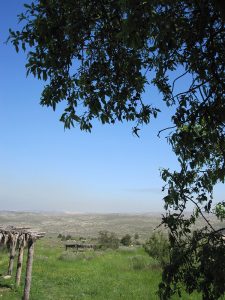
(Photo: Eddeline Marais )
What a wonder to see, smell, and taste the Land of the Bible! That is the purpose of Neot Kedumim, a biblical landscape reserve located between Jerusalem and Tel Aviv. According to their Web site, it’s the only one of its kind in the world “where you can see and experience the Land of the Bible as it was during the time of the Bible.” At the beginning of spring, Bridges for Peace took their volunteers there for a day trip. Half of us went sheepherding, and the other half visited a Torah(Gen.–Deut.) scribe. We also drew water from a well like Abraham’s, ground wheat with a stone hand mill, pushed a heavy stone olive press around a few circuits, and ground hyssop with a mortar and pestle.
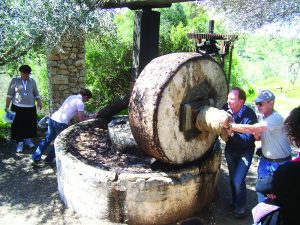
(Photo: Charleeda Sprinkle)
Did you know there are 11 stages to ancient bread making? That the ink that scribes use is made with pomegranate rind, almond sap, coal, and gallstones (abnormal growths on an oak tree)? That the seeds of a carob tree were used in Bible times as the smallest unit of measurement? That it takes over a ton in weight to crush an olive pit to extract the oil? That the best way to guide a flock of sheep is to first find the leader? These are just a few examples of what is taught on a tour of Neot Kedumim.
It was in the 1920s that Hannah and Ephraim Hareuveni birthed the idea for such a place. They founded and developed the Museum of Biblical and Talmudic Botany at the Hebrew University in Jerusalem (later destroyed in the War of Independence). It was their dream to create a Garden of the Prophets and Sages. In a proposal presented in 1924, Ephraim wrote: “If we can no longer hear the ringing words of the prophets, but we can see what they saw and smell what they smelled, let us therefore arrange a plant garden of our ancient literature, and learn to write in it and to read there from the Book of Books and the Song of Songs in the letters and the colors which were used for writing the Book of Books (the Torah) and was the source for all of the psalms.”
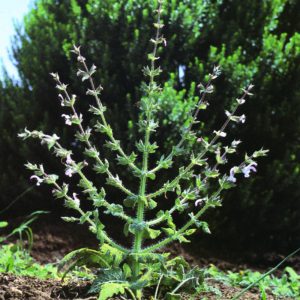
Moriah plants resemble the menorah. (Photo: Nogah Hareuveni)
But it wasn’t until 1965 that their son, Nogah Hareuveni (at the age of 41), finally saw the founding of Neot Kedumim take place. However, the land was barren and had to be completely cultivated. It took someone with great vision to see that this land could become its namesake: “beauties of ancient times.” But as recorded, it “was built literally with the Bible in one hand and a spade in the other.”
Nogah was an incredible man, well qualified for such a task. After earning a master’s degree in botany and Judaic studies, he developed a field survival course for training the Hagana and Palmach, Israel’s pre-state military organizations. After 1948, he taught the same program to the Israel Defense Forces. One of the instructors whom Nogah trained memorialized him after his death in 2007 by saying that the lessons he learned “with the background of the scriptures, were deeply assimilated in my memory and have been following my way since then as lit torches.” When Nogah left the army, he gave himself to seeing his parents’ dream fulfilled.
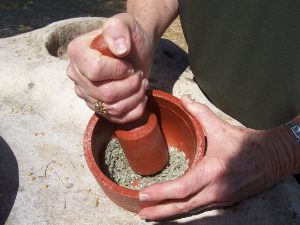
(Photo: Charleeda Sprinkle)
It is impossible to experience all the delights of the reserve’s 625 acres (253 hectares) in just one visit, as it’s a seasonal experience. In the spring and early summer, one can view the seven species of the Land (Deut. 8:8) in blossom, harvest wheat, and taste roasted grain. During the fall (autumn) at the time of the High Holy Days, one can try their hand at plowing and sowing or walk through the gardens of the four species of the Feast of Tabernacles: the date palm, myrtle, willow, and etrog. In winter, in conjunction with Hanukkah, a tour includes harvesting olives and operating an olive press, making a clay oil lamp, and seeing a moriah plant that resembles the menorah in the Temple.
Other possibilities are cheese making, pottery, weaving, minting coins, and cooking. Here, too, every plant and tree has a story that comes from its Hebrew name. Guided tours, especially for first-timers, are the best way to go, but there are also four self-guided trails. Three are 2.5 kilometers (1.5 miles) long on paved pathways for a pleasant 1.5 to 3-hour walk, while one is a 5 kilometer-long (3 mile) hilly hike. At least 400 plants and trees are marked along the way such as the terebinth, acacia, cedar of Lebanon, cypress, sycamore, Tabor oak, and tamarisk.
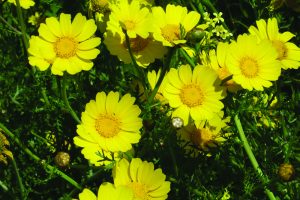
(Photo: Kathy DeGagne)
This is a place you want to include on a tour of Israel. (Go to www.neot-kedumim.org.il for more information.) But if you can’t make the flight, all is not lost. You can still learn from Nogah by ordering his three books: Desert and Shepherd in Our Biblical Heritage, Tree and Shrub in Our Biblical Heritage, and Nature in Our Biblical Heritage. Either way, it’s an education you don’t want to miss out on!
All logos and trademarks in this site are property of their respective owner. All other materials are property of Bridges for Peace. Copyright © 2024.
Website Site Design by J-Town Internet Services Ltd. - Based in Jerusalem and Serving the World.